As supply chains increase in complexity it becomes more difficult to assure the provenance, authenticity and traceability of food products. High profile cases such as the 2013 horsemeat scandal highlight the need for adequate food safety, quality management and traceability practices. Failure to deal with these issues can lead to loss in annual revenue and damage to brand reputation. Indeed, food products are the largest counterfeit category in the EU, costing the UK £1.17bn a year. Despite this, Scotland has good technical capability to tackle food fraud, having a wealth of expertise (in both academia and industry) in various domains such as DNA-fingerprinting, stable isotope ratio analysis and distributed ledger technology. As a result, Scotland is in a strong position to develop a robust multidisciplinary approach to tackle food authenticity, provenance and traceability.
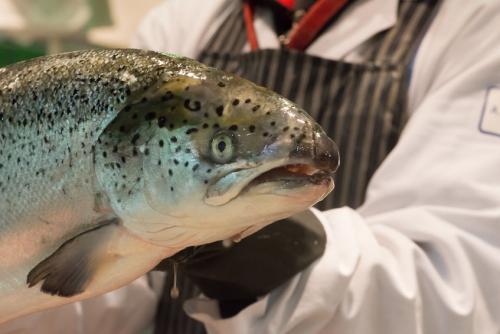
Stage
Purpose
The food and drink sector is one of the largest industry sectors in Scotland valued at £14bn in 2018. Building upon the reputation of Scotland as a “the land of food and drink,” Scotland Food and Drink (SFD) a not-for-profit organisation that guides food and drink companies of all sizes towards increased profitability - have launched their industrial strategy for growth intending to promote the Scottish brand and grow the sector to £30bn by 2030. However, as food and drink supply chains increase in complexity, it has become more challenging for food producers and retailers to guarantee the provenance, safety and quality of their products. To address these challenges and improve transparency across the supply chain, we undertook an independent review of the technologies best suited to address these issues, and mapped the skills and expertise relevant to this area across SEFARI institutes, Scottish universities and businesses based in Scotland.
Results
While many technologies can be used to establish authenticity, provenance or traceability in food and drink products, during this project we focused on the technologies with the most relevance for the salmon and beef production industries. In these sectors, technologies such as 1) the use of genetic markers, 2) stable isotope ratio analysis (SIRA) and 3) distributed ledger technology (DLT) have great potential for testing authenticity and provenance or providing traceability, respectively.
1.Genetic material is present in all living organisms and provides the instructions that control and regulate most biological processes. This material differs between members of different species but can also differ between individuals of the same species. As a result of these differences in the genetic composition, it is possible to identify individuals or species by monitoring small genetic regions using genetic markers. Within the agri-food sector genetic markers have been used to accelerate traditional breeding by using marker-assisted selection: for example, using genetic markers that are associated with valuable traits (such as quality or disease resistance) allows breeders to screen promising plant selections at the seedling stage reducing the time it takes to develop new plant varieties. The use of genetic markers for breeding in both the beef and salmon industry is well established, however, these tools can also be adapted to test authenticity. While the literature demonstrates the potential of this technology to discriminate different breeds/populations or even individual animals (Negrini et al., 2008; Ozorov et al., 2017), there are associated costs which may act as a deterrent for its widespread implementation in Scotland.
2. Chemical elements, such as hydrogen and carbon, can occur in more than one form called isotopes. The isotopes of a single element may have different masses due to the addition of sub-atomic particles called neutrons. For example, most carbon in nature has an atomic mass of 12 however about 1.07% of carbon atoms contain an extra neutron and have an atomic mass of 13. If the different forms of an element do not decay, they are referred to as stable isotopes. All biomolecules contain elements which contain stable isotopes, such as hydrogen (1H and 2H), carbon (12C and 13C), nitrogen (14N and 15N), oxygen (16O, 17O and 18O) and sulfur (32S, 33S, 34S and 36S). Many environmental, geochemical and biochemical processes discriminate against the heavier isotope, resulting in differences in the ratio of isotopes across landscapes; visualized as so called “isoscapes” (Figure 1). Stable isotope ratios can therefore provide geographical information of biomolecules. Measurement of stable isotope ratios has been successfully applied to establish the provenance of whisky, wine and seafood (Osorio et al., 2011; Carrera and Gallardo, 2017), though there are some limitations in its application to the salmon industry. Stable isotope ratio analysis has been evaluated as a tool for establishing Scotch beef. Whilst the technology can successfully discriminate beef grown in widely separated countries i.e. Scotland v Argentina, it is more difficult to discriminate beef reared in close geographical proximity i.e. Scotland v England close to the border.
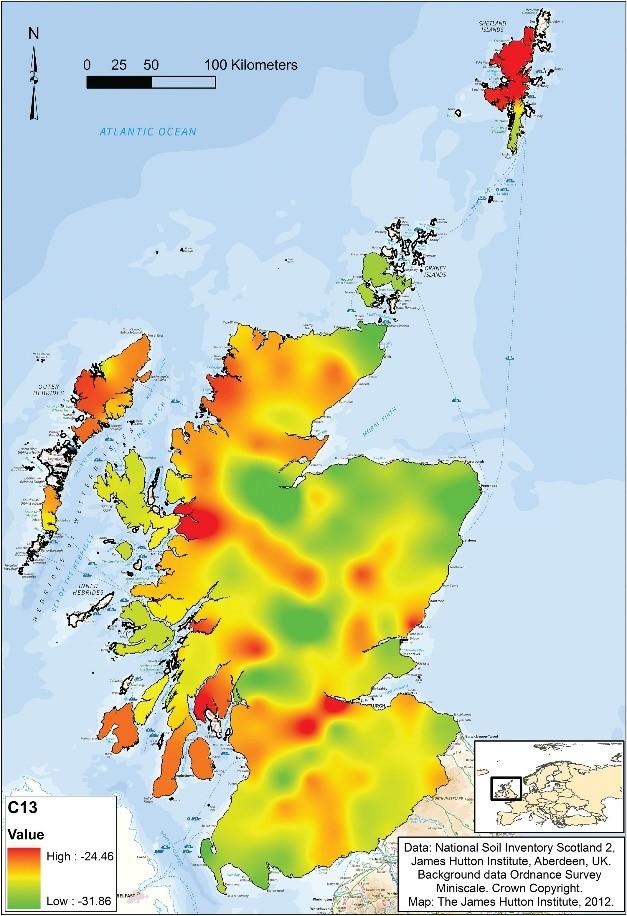
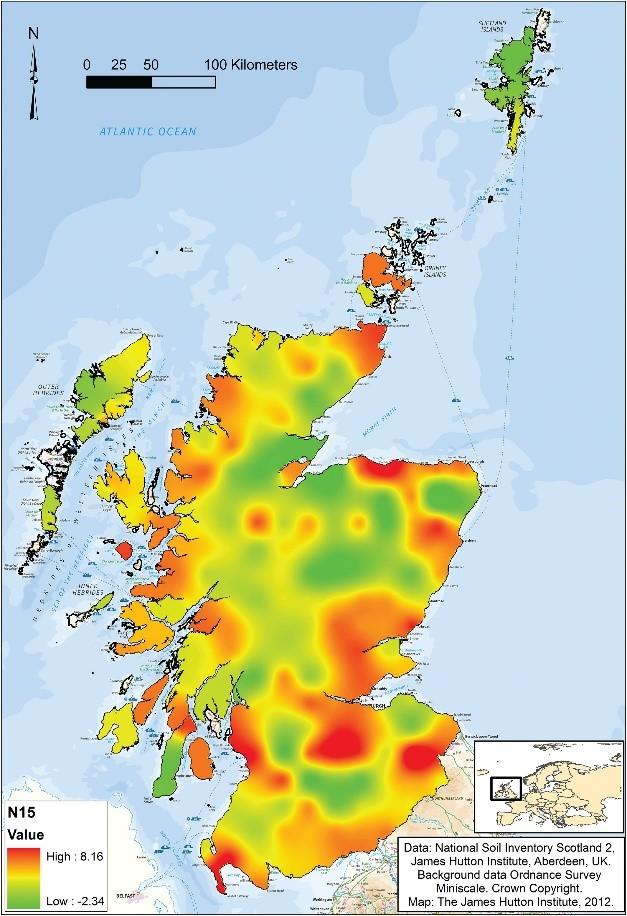
Figure 1 - Isoscapes of topsoil δ13C (‰) (image on the left) and δ15N (‰) (image on the right) across Scotland; the interpolation was based on 182 and 183 sampling points, respectively. Data from Thornton et al. (2015).
Blockchain is a form of DLT where data resides in a distributed ledger but it is connected in chains of blocks. These blocks can contain information (such as transaction data) and are linked together with immutable cryptographically secure keys. Within a food supply chain context each block could register transaction information (e.g. transfer of material from suppliers to processors), and as products move down the supply chain, new blocks containing transaction information are added to the existing chain of blocks. Ultimately, this blockchain will contain the full transaction history of each product providing an auditable chain of events that could be used for traceability purposes (Figure 2).
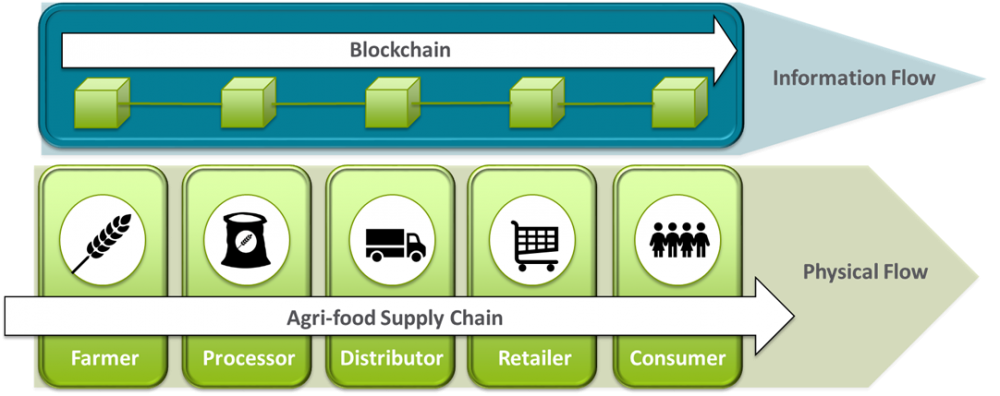
Figure 2 – Example of how blockchain can be used to link transaction information associated with products as they move through the supply chain.
While some retailers overseas are already deploying these technologies (eg. Walmart and Carrefour), its application in Scottish agri-food supply is still modest with high costs and lack of perceived benefit cited as deterrents to its implementation.
Each technology has its benefits and limitations and ultimately no individual technology can single-handedly address all the issues surrounding authenticity, provenance and traceability. While Scotland already has significant expertise in all these three areas across academia and businesses, this expertise is often distributed across different institutions with little integration between these solutions.
We proposed that adopting a framework that integrates multiple technologies into a combined proactive solution could be the key to ensure authenticity, traceability and provenance of various agri-food products (Figure 3).
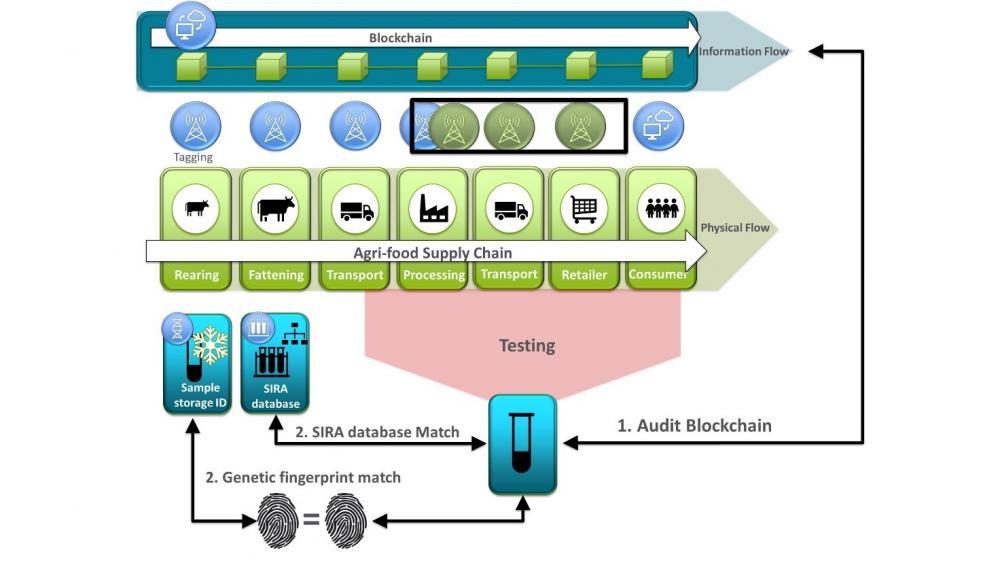
Figure 3 - Example of a concept traceability scheme that integrates multiple technologies to ensure traceability, authenticity and provenance. Blockchain provides a record of transaction history from farm-to-fork and can be linked to individual animals with a unique DNA sample stored. In order to facilitate automation of registering physical flows of material to the blockchain it is suggested that scanning systems could be deployed to track tagged animals and tagged processed products. In order to ensure that products are not substituted, or electronic tags replaced each animal/product could be tracked to an individual animals using the block chain; It would then be possible to test whether the tested product has the same genetic fingerprint as the stored samples corresponding to the animal of origin. Additionally, the use of stable isotope ratio analysis could be used to validate whether the tested product has the expected isotope ratio pattern expected from its provenance.
Benefits
During this project we conducted a survey of different technologies and assessed their cost-benefit with regards to their application in establishing authenticity, provenance and traceability in beef or salmon products. We identified the advantages and limitations of each of the shortlisted technologies with respect to their practical implementation and communicated these outcomes to relevant stakeholders in the food and drink industry. Additionally, a directory of expertise was created identifying each of the institutions/businesses with relevant expertise in each of the technologies.
In the short term, we are developing a demonstrator proof-of-concept project that integrates multiple technologies to assure authenticity and traceability across an agri-food supply chain. This will allow other agri-food businesses to assess how these tools can be implemented in the Scottish context and will highlight the benefits, challenges and limitations of these technologies.
In the long term it is expected that this information will help businesses decide on whether they will want to develop an authenticity, provenance and traceability scheme. It is expected that the directory of expertise will the help to establish links and form collaborations between businesses and/or academia with the goal of improving the standards of authenticity, provenance and traceability testing.
Project Partners
Scotland Food and Drink